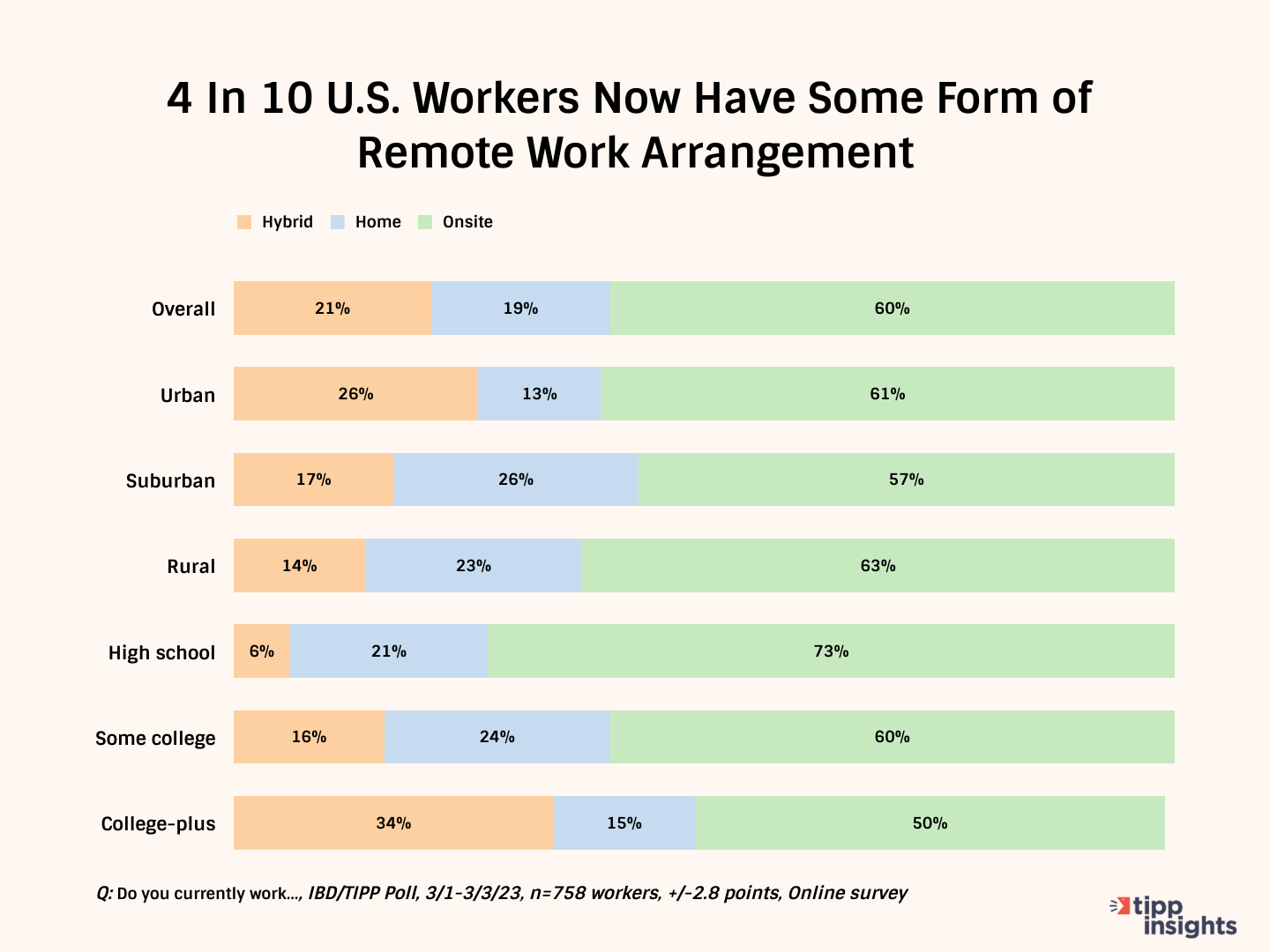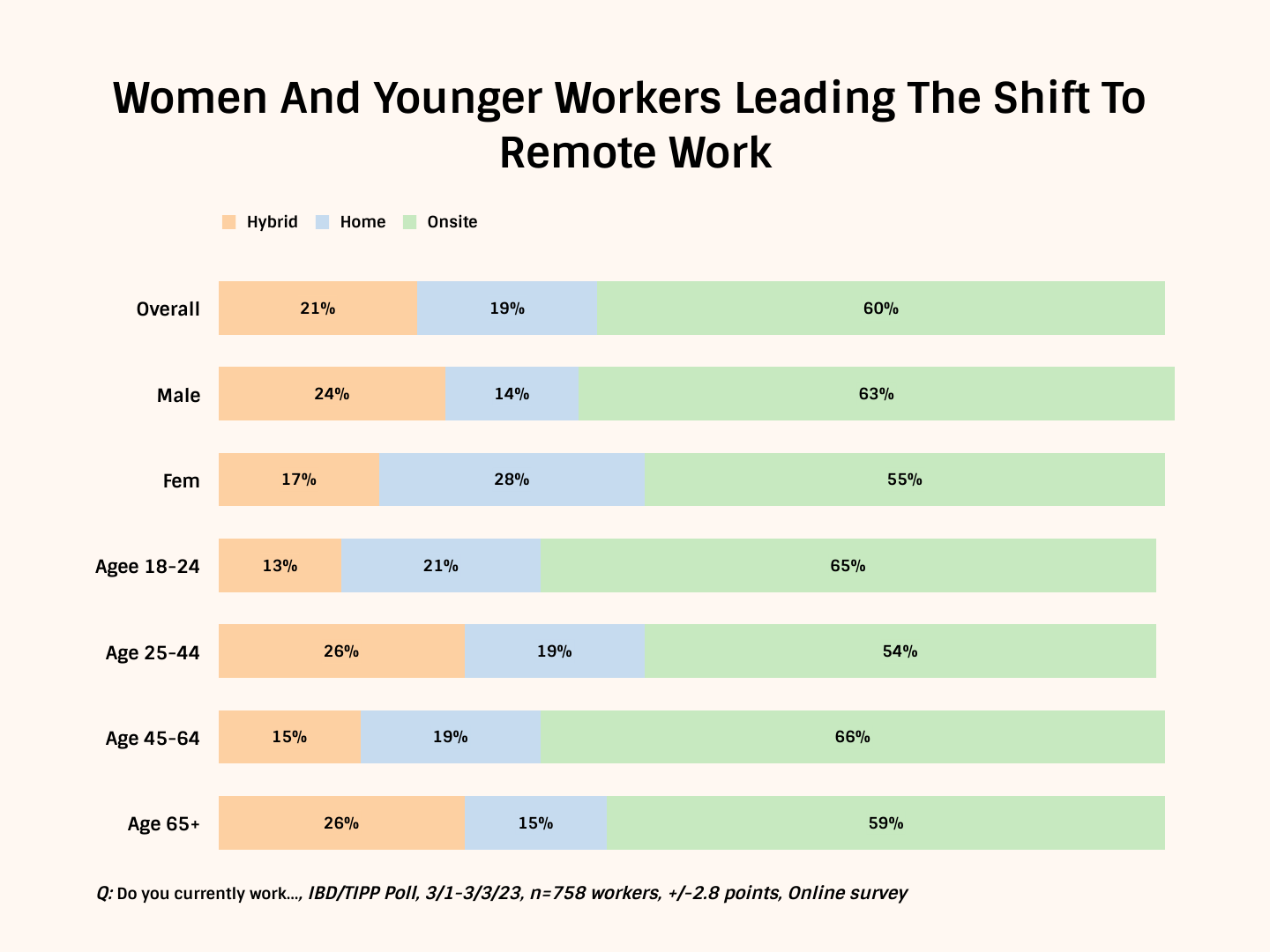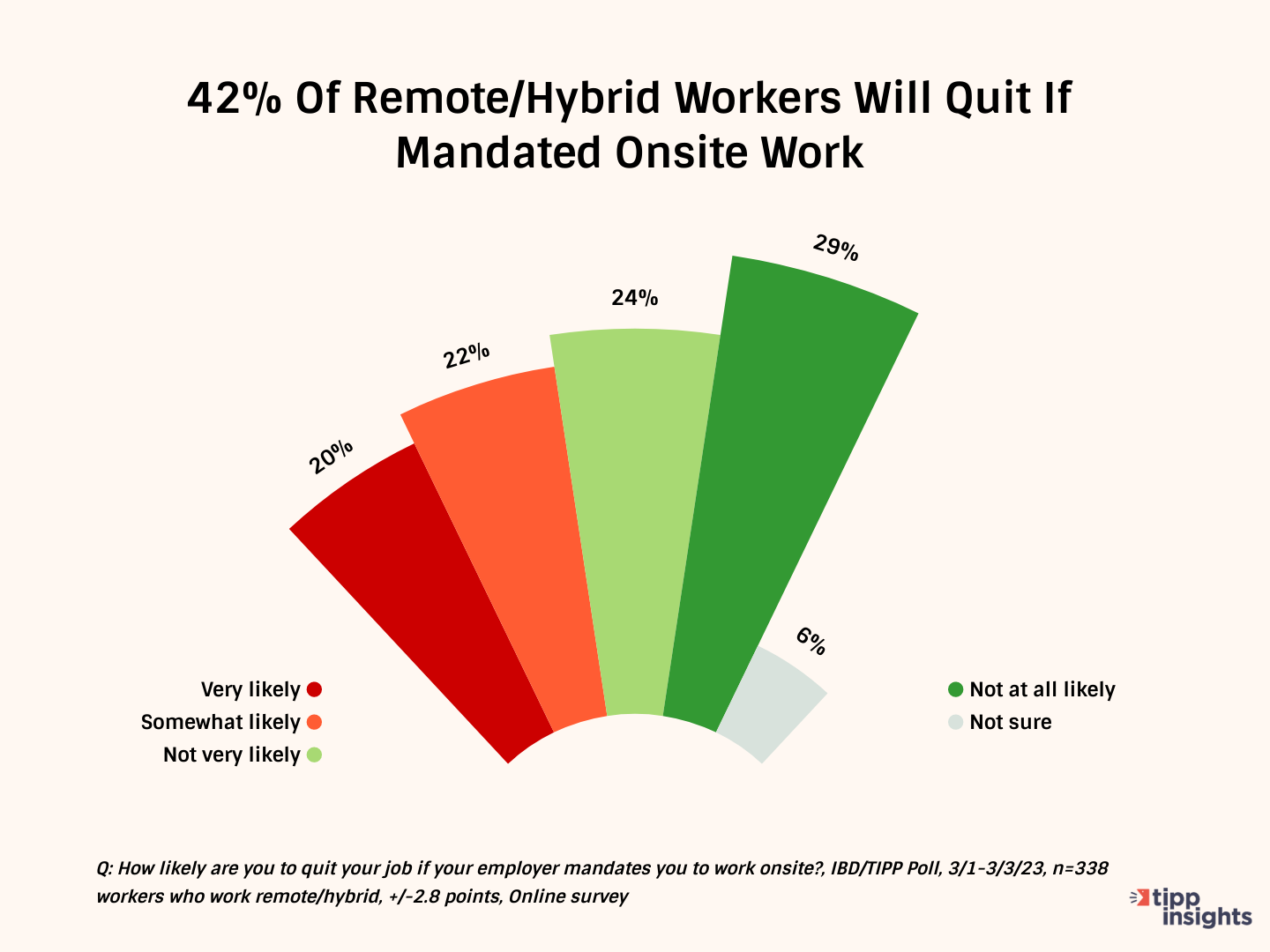Many of the changes devised to cope with the Covid-19 pandemic have been discarded or found to be unsustainable in the long run. But some changes, like how work is carried out in many companies, seem to have a residual effect.
While some of these changes are here to stay, often changing the very norms in the industry, much has gone back to the pre-pandemic normal. For instance, much of the workforce has returned to their offices or places of work. To the March 2023 IBD/TIPP Poll question, “Do you currently work...” the responses were:
- 60% Onsite at company only
- 19% From home only
- 21% Hybrid (home + onsite)
A fifth of those surveyed continued to work from their residence. ‘Work from home’ (WFH) was the only option for many during the pandemic lockdowns and social distancing days.
Another fifth engaged in a ‘hybrid’ work model, once an exclusive privilege of the IT industry. Other sectors adopted the hybrid work option to transition to full-time onsite workdays.

WFH and hybrid work seem to have the most takers among women and those between the ages of 25 and 44. Seniors, too, seem to opt for the comfort of their homes or flexible-work hours.

Off-site work options have more takers among the suburbanites. This could be because remote employees do not have to stay within commuting distance from their place of employment. Notably, half of those with a college education had a remote job or a hybrid work schedule.
Employees have become quite adept at functioning from remote or home offices. The flexible hours, savings on commute cost and time, and the option to stay anywhere are some of the most cited benefits of not having to turn up to work at an office. On the flip side, employers get access to a wider pool of talent and make considerable savings on overheads by saving on office space.
The hybrid model helps companies’ workforce stay connected, facilitating face-to-face interactions when necessary. The limited and flexible interaction has been shown to improve work efficiency. The employees enjoy a better work-life balance, and companies can retain top talent.
While remote work has allowed many companies to continue operations during the pandemic, some feel that there are benefits to in-person collaboration that cannot be replicated virtually.
While there were many hiccups due to the abrupt change in the initial days, most overcame the challenges thanks to modern technology, digital devices, and reliable internet connectivity. Having grown comfortable with flexible hours and settled into work-friendly home environments, many are unwilling to return to onsite work full-time. To the question, “How likely are you to quit your job if your employer mandates you to work onsite?” the responses were:
- 42% Likely
- 53% Not likely
There is a very small margin of difference between those willing to keep their employment and those willing to quit should their current work situation change. A fifth (20%) were ‘very likely’ to quit if asked to return to the office. A slightly higher percentage (22%) were ‘somewhat likely’ to give up their jobs. Close to a third (29%) were not contemplating giving up their employment even if office attendance became mandatory, and a quarter (24%) felt quitting was ‘not very likely.’

The TIPP Poll found that 57% of households were ‘job sensitive,’ i.e., at least one family member was looking for employment or would likely lose their current job in the next six months. In light of the job sensitivity rates, the 42% who may quit if asked to return to full-time work is significant.
A likely reason for such a sentiment could be that a tight labor market that favors job seekers may still be in play. But the recent mass layoff in the tech industry could change the tide drastically.
Interestingly, despite many claims of increased productivity being touted as one of the major benefits of WFH and hybrid work models, the Poll found a major contradiction.
To the question, “Which is more productive?” the responses were:
- 27% Working from home
- 65% Working onsite
- 8% Not sure
Nearly two-thirds, 65%, of those surveyed said that working in an office or onsite made them more productive. Only slightly more than a quarter, 27%, felt that WFH increased their productivity.

The pandemic has shown that remote work or hybrid work patterns need not remain the domain of the Tech sector. Finance, Marketing, Advertising, Education, and Healthcare companies can leverage the latest technologies to employ and serve sans geographical constraints.
While onsite work attendance is picking up, it remains to be seen if everything will return to how things used to be before the Coronavirus wreaked havoc in the world. The future of employment will likely evolve, considering the strides made in technology, internet connectivity, reduction of overheads, and the rising demand for work-life balance.
Like our insights? Show your support by becoming a paid subscriber!
Want to show your appreciation? Donate









